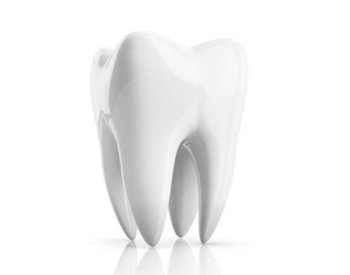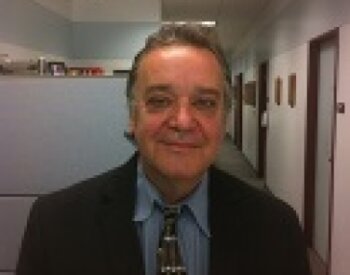
A recent exploratory study by a researcher at The University of Texas Health Science Center at San Antonio found a potential link between a buildup of organic chemicals in baby teeth and autism spectrum disorder (ASD).
In a study published March 14, in the Journal of Xenobiotics, Raymond Palmer, PhD, a biostatistician and epidemiologist with the department of family and community medicine at UT Health Science Center San Antonio, investigated whether children with ASD had a higher concentration of organic chemicals in their baby teeth compared to teeth from children without ASD.
Autism spectrum disorder is a neurodevelopmental disorder affecting between one in every 30 to one in every 44 births in the United States and is the most diagnosed childhood developmental disorder. Idiopathic ASD is believed to arise from interactions with genes and environmental factors.
Getting to the root of it
To investigate the potential concentrations of chemicals in children’s teeth, Palmer and his team pulled from a repository of hundreds of donated teeth, mostly from the Interactive Autism Network. The IAN is the world’s largest online autism research forum with more than 43,000 participating families. Researchers took a random sample of 42 teeth with 22 from children with ASD and 20 from children without ASD.
Baby teeth contain a record of toxic exposure that occurred in utero. Tooth dentine and enamel start to form in the womb around the second trimester. Whatever the mother is exposed to during that time is absorbed into the developing enamel and is sequestered there indefinitely.

“The mother’s exposures are what the developing fetus is exposed to,” Palmer said. This would mean that the mother of the child was exposed to these chemicals either from breathing them in the air, ingesting them in food or absorbing chemicals through their skin.
The sampled teeth were crushed to atoms and analyzed using gas chromatography and mass spectrometry. Over 11,000 chemicals were discovered among the teeth with an average of 315 chemical compounds per tooth. About 200 of these chemicals were identified through the Chemical Abstract Services libraries. CAS is a division of the American Chemical Society and their database contains millions of registered substances and is known as the “gold standard” for chemical substance information.
Higher chemical concentrations found in teeth of children with ASD
The results showed there was a significantly higher concentration of chemicals in the teeth of children with ASD compared to children without ASD. Most of the chemicals found were phthalates, plasticizers, pesticides, antimicrobials and solvents used to produce these compounds. Five chemicals found are listed on the Pesticide Action Network’s “Bad Actors” list. PAN is an organization that aims to highlight the potential harm of industrial agriculture and work toward finding alternatives to harmful pesticides. Many of the chemicals found in this study are fragrance additives for personal care or cleaning products and food additives.
Palmer said it is unclear why there is a higher concentration of chemicals in the teeth of children with ASD, but it could mean these individuals have a decreased ability to metabolize these chemicals.
“There are always environmental interactions with your genetics and that is highly individual. Some people could be exposed to these chemicals and metabolize them just fine, but others just cannot. Over time it wreaks havoc on your neurons,” Palmer said.
No ‘silver bullet’ to causes of autism spectrum disorder
Palmer said pinpointing the origins of ASD development is difficult because there are hundreds, possibly thousands, of genes connected to the development of ASD and thousands of environmental factors interacting with these genes.
“We’ve come out of the age of the ‘silver bullet.’ It’s not that way anymore. There’s not going to be any one thing that causes autism. It is basically a soup of interacting environmental toxins and our individual genetic makeup
. It is not nature or nurture – it is always both,” Palmer said.
Decrease chemical exposure whenever possible
Palmer suggests everyone should aim to decrease their exposure to potentially toxic chemicals, especially individuals who are pregnant or are trying to get pregnant. Ways to accomplish this include eliminating processed foods, avoiding unnecessary fragrances in personal care or cleaning supplies, removing carpets and using only low-volatile organic compound (VOC) paints.
Still, Palmer said, even the most conscientious person cannot avoid all chemicals in this modern life. He said real momentum will have to come through stronger public health protections to limit human exposure to potentially harmful chemicals.
“We need public policy to ensure we all have clean air, food and water,” he said.
___________________________________________________________________________________________
An Exploratory Investigation of Organic Chemicals Detected in Baby Teeth: Differences in Children with and without Autism
Raymond Palmer
First published: Journal of Xenobiotics, 2024, https://www.mdpi.com/2039-4713/14/1/25
________________________________________________________________________________________
The University of Texas Health Science Center at San Antonio (UT Health San Antonio) is one of the
country’s leading health science universities and is designated as a Hispanic-Serving Institution by the
U.S. Department of Education. With missions of teaching, research, patient care and community
engagement, its schools of medicine, nursing, dentistry, health professions, graduate biomedical
sciences and public health have graduated more than 42,550 alumni who are leading change, advancing their fields and renewing hope for patients and their families throughout South Texas and the world.
To learn about the many ways “We make lives better®,” visit UTHealthSA.org.
Stay connected with The University of Texas Health Science at San Antonio on Facebook, Twitter, LinkedIn, Instagram and YouTube.

